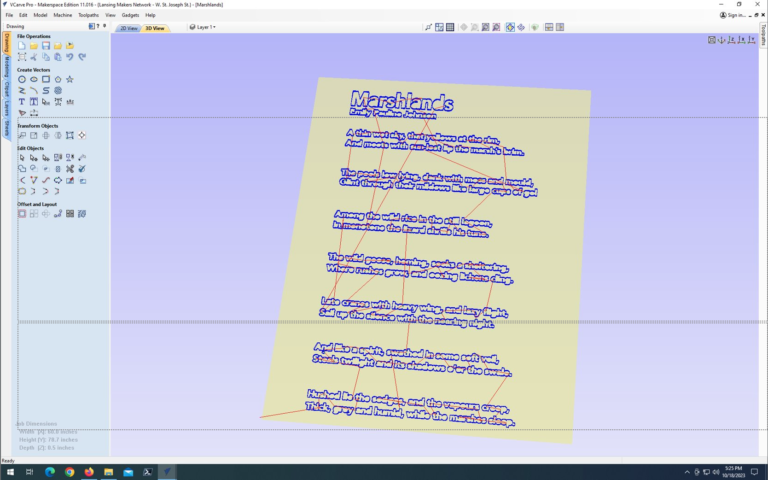Summer 2020 Seed Grant Funding Report
Submitted by Divya Victor, Julian Chambliss, and Natalie Phillips
Overview & Project Goals
Inspired by Professor Divya Victor’s forthcoming book Curb (2021), CURBED3 is a web-based multimedia space that seeks to visualize instances of racial othering in the United States. The DH@MSU Summer Seed Grant supported Digital Humanities and Literary Cognition Lab’s (DHLC) first fellow in our Public Humanities Fellow program. Our goal is to aid Professor Victor in developing her digital praxis. Borrowing heavily from Professor Victor’s book, which utilized geolocation data to highlight instances of racial othering in public spaces, our central effort is to design a web prototype that would allow the public to share their stories of othering inspired by CURB. We utilized seed grant funds for research and work on the prototype.
A digital extension of Victor’s poetry, Curb (2021), CURBED seeks to catch and document a particular quotidian feeling of being fearful in a anti-Muslim, anti-Sikh, anti-immigrant United States, asking: when did that begin, who is that feeling made for, and how does that feeling make us who we are? The webspace is a fundamentally collaborative effort intended to build cross disciplinary connections in approaches to storytelling and interpretive witnessings. The webspace will host commissioned, interactive materials created in response to poetry from Curb: rhetorical musical assemblages created by Carolyn Chen, Los Angeles based new musique composer; experimental, minimalist documentary using Google satellite imaging, by Bay-area based video artist and writer Amarnath Ravva; printable “hacks” into public space and illustrations by Austrian illustrator and designer Karin Aue who is based in Singapore. Using a combination of Omeka S and WordPressing platforms, we are hoping to build a web space that encourages and hosts new approaches to narrativizing acts of exclusions and inclusion in public spaces. We are asking how the United States can be mapped experientially and phenomenologically, through storytelling and sensory engagements. This project’s timing is crucial as we hope to launch it in 2021, which marks the 20th anniversary of the 9/11 attacks as well as a two-decade rise in anti-South Asian and anti-immigrant violence in this country.
Building a Vision
While this project is guided by the artistic and humanistic goals inspired by Divya Victor’s poetry, we sought to contextualize those ideas within the broad narrative of digital humanities work. We examined website projects such as First Days Project ( https://firstdays.saada.org/), which documented stories of immigrants’ first experiences in the United States, as a possible example in the early stages of the research.
These projects provided a framework to consider how public interaction through a digital portal might be accomplished. Moreover, we were able to identify important parameters to consider as consider the best digital platform for the project.
Key First Steps, Consultations and Collaborations Seeking to identify the best pathways for the project, we consulted with Dr. Kalani Craig, Co-Director, Institute for Digital Arts & Humanities and Clinical Assistant Professor, Department of History, Indiana University, Bloomington about digital mapping from an ideological and practical perspective. In dialogue with Professor Craig and drawing on aesthetic concerns about trauma and othering the digital realm, the project shifted to consider how the methodology of mapping fails to provide the nuance necessary to take into account the multiple views on positionality central to this project. Drawing on feminist and queer geographies we increasingly sought to identify ways that we can provide a space for the spaces on the map to take into account the complexities of the lived experience across time and space.
Further consideration of this approach was emphasized by Dr. David Staley, Associate Professor and Director of the Humanities Institute and Director of the Center for the Humanities in Practice Faculty at Ohio State University. In our conversation with Professor Staley, he stressed pushing beyond the boundaries of the conventions offered by traditional web design and consider the “affordance of the page” as means to mirror the complex set of interactions represented by the human experience. Building on these considerations, we pursued a prototype process that sought to understand the ways users experience the creative and the digital within the context of this project.
Project Achievements & Future Plans
Our considerations have led to a multisite experience with the tone and aesthetic working across two distinct websites. This approach allows the project to utilize Omeka as a repository for collecting artifacts from the public. Omeka’s stability, utility, and customization options make it the best option. After the end of the summer, we successfully created a test website to allow us to explore the ways media would be added and visualized. Our next steps are to further identify the best means to customize functions within the site and integrate those elements, allowing Victor to integrate the work of multimedia artists. We/she also began to create a crowd-sourced GPS-based map that anonymously documents lived experiences of both racial hostility and of racial community, and imagine an online space that pushes back against traditional models to create spaces for lingering, loitering, and safe engagement. One of the key questions Victor explores is: how do we not reproduce alienation and retraumatization in gathering these stories—particularly the alienation which comes when you abstract things from the lives of people who are doing the storytelling and giving—through carefully crafted virtual engagements with these storytelling devices or narratives?
CURBED explores these alternatives through a rich aesthetic vision, working with artists who specialize in a particular sensory engagement with narrative. This project, begun with the support of the DH Summer Seed Grant, will be extended, enriched, and bolstered by the project being accepted into the Digital Scholarship Lab Project Incubator. With this additional support, Victor’s innovative public humanities project will be able to develop at an accelerated pace and reach ever-broader audiences and readers.
